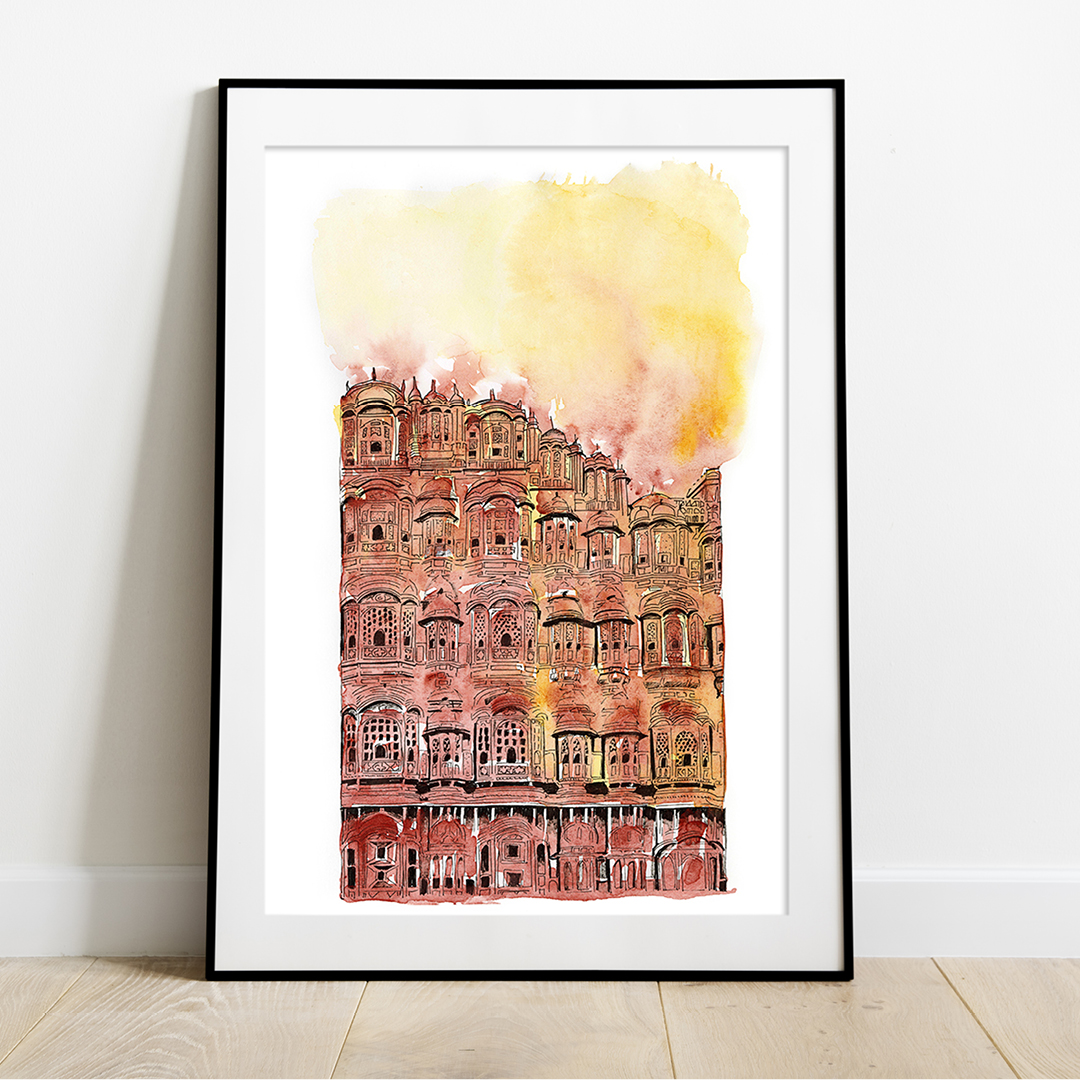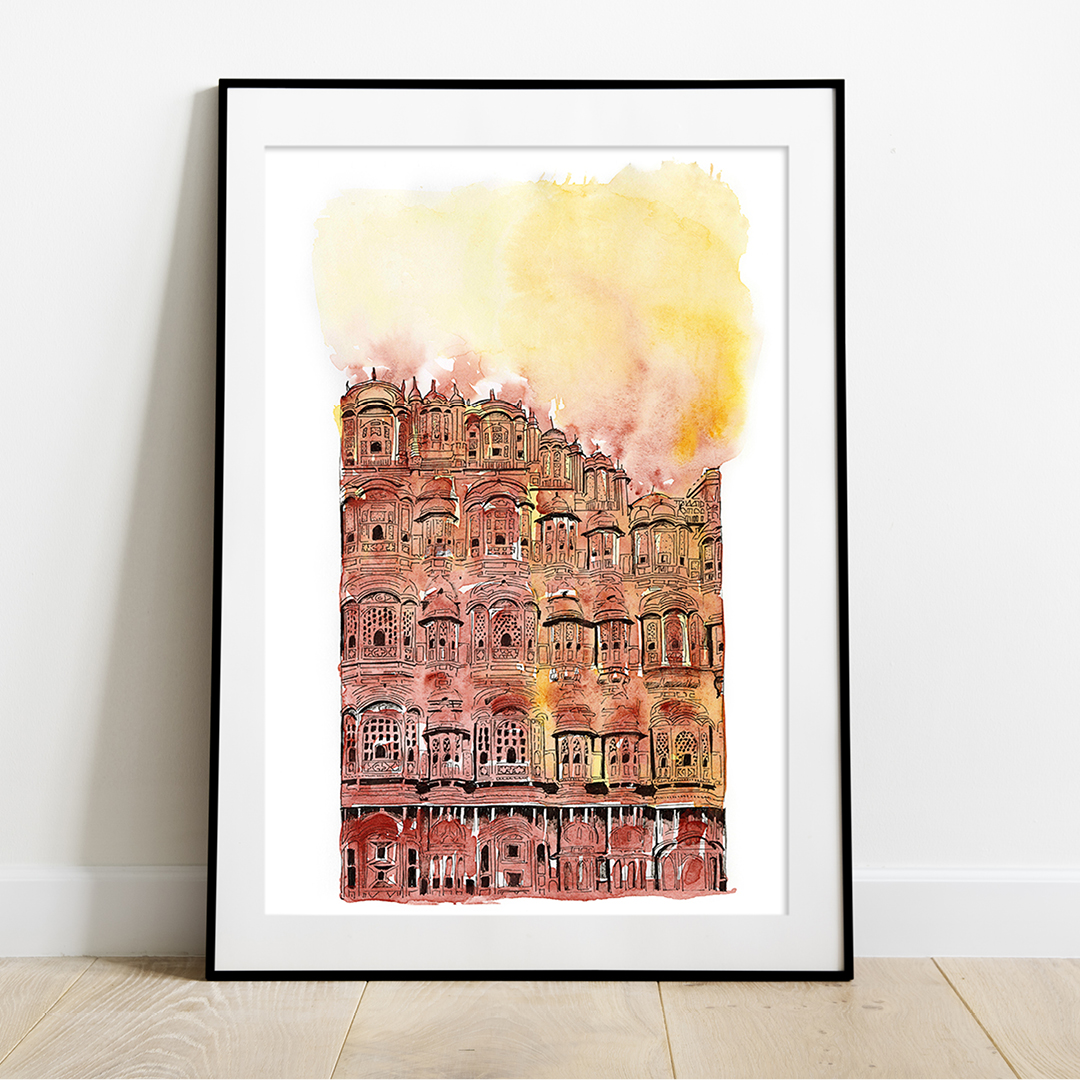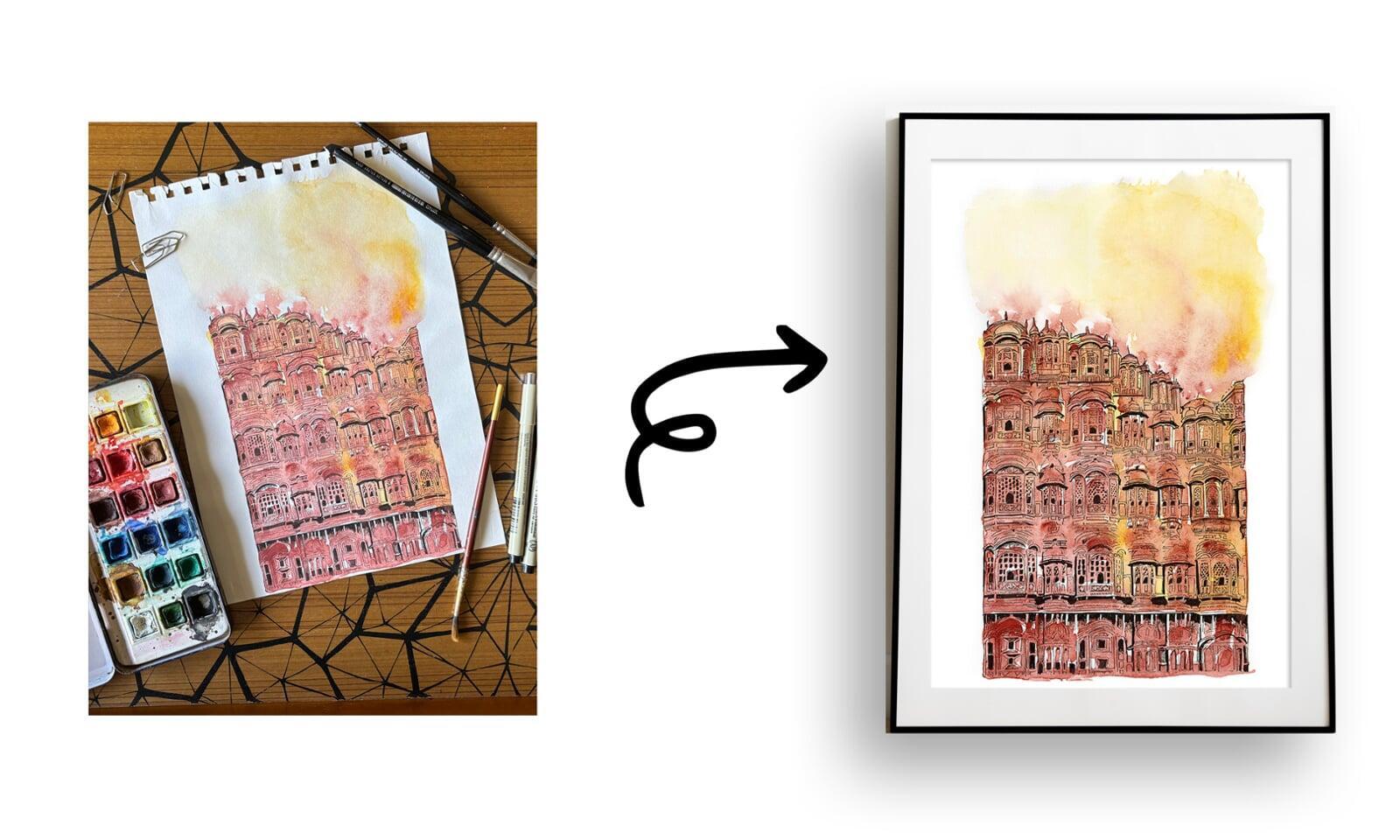



Historical Window - Art No. 230/2024
2. This is limited edition painting.
3. Paper: Archival rag watercolour paper.
4. Frame: High quality frame.
Frame type: Metal / Wood: 0.25" to 1"
5. Mount: Acid-free, mould-free mounts.

Cultural or Heritage Institutions: Museums, historical societies, or cultural centers focusing on Indian heritage or global architecture.
Entryways or Foyers: Especially in homes with classical or Indo-fusion décor, where it can instantly communicate a sense of legacy and wonder.
Study Rooms or Libraries: The piece invites contemplation and learning—an ideal fit for intellectual and quiet environments.
Boutique Hotels or Hospitality Spaces: Especially those that celebrate local history or offer cultural tourism experiences.
Framing it in a muted gold or teakwood frame with a soft cream mat can elevate the traditional aesthetic, while hanging it with soft lighting will highlight the detailed linework and the warm hues of the watercolour sky. Together, the image and quote invite viewers to not only admire beauty—but to peer deeper into the layered stories of the past.


